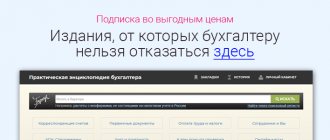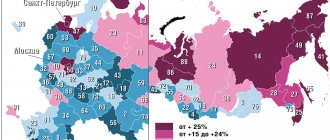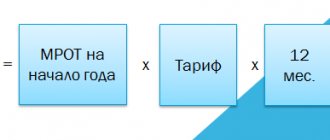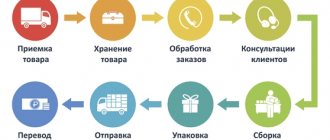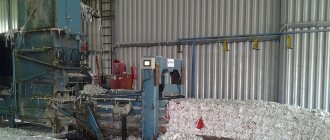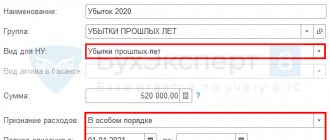What is VAT
VAT is an indirect tax that is paid on the sale of goods, services and property rights. Its payment occurs as follows.
- The factory orders linen to sew a batch of summer dresses. The fabric manufacturer issues an invoice including VAT.
- While seamstresses are making dresses, economists are calculating their cost. They look at how much money is spent on tailoring. The VAT paid for flax is also included in this list, but is recorded as a “tax credit”.
- The dresses are ready and sent to the company store. The calculation of the price tag includes the cost of the goods, the share of profit and the VAT itself.
- When the dresses are sold, the company counts the profit. 20% is deducted from the total amount. The buyer has already paid for them. Then the money goes to the Federal Tax Service.
From the whole situation it is clear that the entrepreneur pays the tax, but the buyer provides it.
Renting non-residential premises - entrepreneurial activity
From January 1, 2022, the VAT rate is 20% and according to Art. 143 of the Tax Code of the Russian Federation, when selling services within the framework of non-entrepreneurial activities, individuals are not considered VAT payers. However, we must pay attention to the definition of entrepreneurial activity. Taxpayers, as a rule, believe that since they did not register an individual entrepreneur, they did not conduct any business activity. But the tax authority thinks differently. What could be the arguments of a tax authority that considers the activity of leasing non-residential premises to be entrepreneurial?
- Non-residential premises are intended for commercial use and are not intended for personal use. How can we explain the use of a depot building, a warm parking lot for tractors, a main production building, a transformer substation, a water tower, an industrial garage, an administrative building, a store, a shopping pavilion, an office space for personal and family purposes?
- The purpose of providing premises for rent is systematic and long-term profit-making.
- The stability of ties is evidenced by the consistency in the choice of counterparties when concluding lease agreements.
- Renting out premises is carried out at your own risk.
- The lessor pays the costs associated with the operation of the property, utility bills, and repairs, which indicates the presence of economic activity in the activities of the individual.
- The lessor bears the risk of accidental loss of property as the owner, as well as risks in the event of a change in the economic situation.
- Lack of registration as an individual entrepreneur does not refute the actual conduct of business activities.
An example from judicial practice
The courts in such a situation support the position of the tax authority. (Definition of the Armed Forces of the Russian Federation No. 16-KG18-17 dated July 20, 2018, Definition
RF Armed Forces No. 59-KG15-2 dated 04/08/2015. Determination of the RF Armed Forces No. 306-KG15-11736 dated 09/23/2015).
Let's take a closer look at the situation reflected in the Ruling of the RF Armed Forces dated September 23, 2015 No. 306-KG15-11736. An individual, not being an entrepreneur, rented out non-residential premises located in a residential building for office use. The tenant withheld personal income tax from the rent paid and submitted information to the tax authority in form 2-NDFL. The tax authority, citing the fact that the named premises were used by an individual not for personal purposes, but to make a profit, assessed additional VAT, determining its amount by calculation by allocating the tax amount from the price specified in the lease agreement.
Thus, those who continue to rent out commercial real estate as an individual are at great risk of additional VAT charges.
Basic concepts of VAT
Object of VAT taxation:
- sale of goods, works, services on the territory of Russia, transfer of property rights (the right to claim debt, intellectual rights, lease rights, the right to permanent use of land, etc.), as well as gratuitous transfer of ownership of goods, results of work and provision of services;
- carrying out construction and installation work for own consumption;
- transfer for one’s own needs of goods, works, services, the costs of which are not taken into account when calculating income tax;
- import of goods into the territory of the Russian Federation.
VAT payers
are Russian organizations and individual entrepreneurs, as well as importers and exporters.
Tax rate VAT
can be equal to 0%, 10% and 20%. There are also “settlement rates” equal to 10/110 or 20/120. They are used for operations specified in paragraph 4 of Art. 164 of the Tax Code of the Russian Federation, for example, when receiving an advance payment for goods, work, services.
Tax base for VAT
in the general case, it consists of the cost of goods, works, and services sold, taking into account excise taxes for excisable goods.
Tax period for VAT
- quarter.
Input VAT
— tax paid to suppliers and subject to deduction.
Output VAT
- a tax received from consumers on the sale of goods and services.
What is the mechanism for paying VAT?
As the name of the tax implies, it is a value added tax. It turns out that VAT should be calculated from the difference between the sale price and the purchase price of goods, works, services, property rights, and there is nothing complicated here.
In fact, the mechanism for calculating VAT is much more complicated; no one calculates the difference between purchase and sale and, accordingly, charges VAT on it.
VAT is calculated from the turnover of goods, works, and services sold, and then the VAT presented when purchasing goods, works, and services is deducted.
For example, a company sells goods that are subject to VAT at 20%. To manufacture these goods, the company purchased goods from suppliers with an allocated amount of VAT.
Thus, the company assessed tax on sales and deducted the tax presented by suppliers.
Example. The company sells power sensors. The cost of one sensor is 420 rubles, including VAT - 70 rubles.
The amount of VAT - 70 rubles - is a tax on sales, which the company is obliged to charge according to the rules of Article 146 of the Tax Code.
To manufacture sensors, the company purchases materials costing 360 rubles, including VAT - 60 rubles.
The VAT amount is 60 rubles - this is the tax presented by the supplier of the goods, which the company can accept as a deduction.
The total VAT that the company will pay to the budget for this transaction will be: 70 rubles - 60 rubles = 10 rubles.
The company will be able to deduct VAT only under certain conditions, which are indicated in Art. 170, 171 NK.
The company must quarterly show in its tax return the amount of VAT in detail, i.e. separately the VAT that is paid on sales and separately the VAT that is deductible on the supplier’s goods.
What is the tax percentage?
The Federal Tax Service applies three tax rates for VAT.
- 0% - applies in cases described in clause 1 of Article 164 of the Tax Code of the Russian Federation. The most common case is the export of goods.
- 10% — food products, goods for children, periodicals, books, medical goods are taxed.
- 20% is the basic VAT rate. Applies in all other cases.
It is important to note that not only goods can be subject to VAT. The tax is paid on imports, construction without a contract and transfer of services and goods for personal use.
The following are exempt from VAT:
- work of government bodies;
- purchase and privatization of municipal and state-owned enterprises;
- investment;
- sale of land plots;
- transfer of money to enterprises operating on a non-commercial basis.
VAT rate 10% in 2022
The specified VAT rate does not always apply. The Tax Code (clause 2 of Article 164) provides a list of goods and services for the sale of which the selling organization uses 10% VAT.
The information regulating this issue is systematized in the article “What is included in the list of goods subject to VAT at a rate of 10%?” .
See also “Fruits and berries with VAT 10%, but only from October.”
Any product has a product classifier code.
For information on how to apply it and VAT rates, read the following materials:
- “How to apply the “product” VAT rate of 10% in connection with the replacement of OKP with OKPD2”;
- “The Federal Tax Service recommends using transition keys between OKP and OKPD2 to determine the VAT rate”.
Medicines are taxed at a rate of 10% (subclause 4, clause 2, article 164 of the Tax Code of the Russian Federation).
In what cases do officials refuse to apply this rate, read the material “When the application of a 10% VAT rate on medicines is impossible .
How is VAT calculated?
You can find many VAT calculators on the Internet. But if you don’t trust algorithms, you can calculate the tax yourself.
VAT calculation
Let's continue the theme of dresses. The factory needs to purchase fabric for 150,000 rubles. To understand how much VAT is from this amount, we use a simple formula:
VAT=X*20/100
It turned out to be 30,000 rubles. But the question is different: is the tax included in these 150,000 rubles or does it have to be paid in excess. The difference is that in the first case the factory will purchase less fabric.
Calculation of the amount including VAT
To calculate the amount including VAT, use the following formula:
Xn = X+X*20/100
It turns out that in order to purchase fabrics worth 150,000 rubles “clean”, the factory will pay 180,000 rubles.
Calculation of the amount excluding VAT
If you need to find out what the amount of fabric purchased without VAT is, you need to apply the following formula:
X = Xn / 1.20
If a factory paid 150,000 rubles for fabric including VAT, then in fact they will bring 125,000 rubles worth of flax to the sewing shop.
Calculation of the amount including VAT, example on a cash receipt
The calculation takes into account what product was purchased. Perhaps everyone has already heard about 18%; this figure applies to most products, but not to all. If a product was purchased from the sphere of children's assortment, some food products, medicines, as well as periodicals, scientific or educational literature, then in this case the figure will change and will be 10%. There are even those products that have zero interest. These include products exported abroad.
When purchasing a cash register receipt, the percentage itself is always visible. To calculate the amount including VAT, you must first find out how the tax itself is calculated. To do this, we will use the simple formula VAT = X18/100, where X is a known amount, and 18, accordingly, is the percentage itself. If we use the previously mentioned example with women's boots, then everything will look like this: 10000018/100=18000. This is exactly how much VAT will be in this case. The store director will pay the supplier 118,000 so that in the end he will have 10 pairs of shoes in stock, as he planned.
When calculating the amount together with VAT, we also use the formula first and then substitute the values. X - also denotes the amount, XN - denotes the amount with tax, thus XN = X + X18/100. In simple terms, the initial amount is added to the already known VAT amount: 100000+10000018/100=118000. This is how payments are formed.
If you calculate the payment for medicines, for example, then it is enough to enter 10% instead of 18% into the scheme.
How to reduce VAT
There are several legal ways to reduce VAT:
- tax deduction;
- reduced tax rates - 0 and 10%;
- exemption from VAT due to the use of a special regime;
- increasing the share of export sales;
- carrying out non-taxable transactions;
- inclusion of delivery in the cost of goods.
Other schemes may raise suspicion from the tax authorities.
Independent verification of the counterparty
What measures can a company take to protect itself from unscrupulous counterparties and what is important to check the counterparty for?
Among the criteria that are worth paying attention to are:
- the correctness of the details in the invoice received from the company;
- the validity of its registration data (whether the company has been excluded from the register of legal entities and individual entrepreneurs), whether the company is on the list of liquidated ones;
- checking senior management for disqualification;
- whether the company is a shell company;
- existence of debts on taxes and fees;
- form of taxation.
Today, a significant amount of information about a legal entity can be obtained from the electronic services of the Federal Tax Service (they are combined in the block “Check if your business is at risk?”).
The service “Information on state registration of legal entities, individual entrepreneurs, peasants/farms” (https://egrul.nalog.ru) allows you to understand whether the company is registered in principle, information about its management, etc. An extract from the Unified State Register of Legal Entities is also available for download here/ EGRIP.
The invoice verification service (https://npchk.nalog.ru) allows you to check the correctness of the submitted invoice. Since, according to the new rules, starting from 2015, information in the VAT return must contain data from the Book of Purchases and Sales, this resource will save time on identifying errors in the declaration.
The search can be conducted using the organization's INN/KPP.
Tax deduction for VAT
The company has the right to reduce the amount of VAT tax charged to it by suppliers. This is called a tax deduction. You can apply for it in the following cases:
- VAT was presented by suppliers for goods, works or services.
- The entrepreneur paid VAT to customs when importing goods from abroad.
- The tax was presented by the sellers of property rights.
An individual entrepreneur or a company claiming a deduction must document the fact of the transaction, the purchase of goods for transactions on which VAT is charged and the registration of goods. Then the transaction will not arouse suspicion from the tax authorities.
Documents for VAT deduction
In order to receive a deduction, you need to prepare a package of documents and send it to your VAT return electronically. The declaration must indicate input and output VAT and the amount of tax payable.
The package of documents includes:
- invoices from suppliers;
- primary documents from suppliers that confirm that the transaction took place - invoices, certificates of completed work, etc.;
- documents confirming the registration of goods, works or services - acceptance certificates, extracts from KUDiR.
Invoices from suppliers must be recorded in the purchase ledger, and invoices issued by yourself must be recorded in the sales ledger.
Then the tax office will check the transaction data. If they do not cause suspicion, nothing more needs to be done. If the inspector has questions, he will require supporting documents. Lack of documents may result in an on-site inspection.
VAT return and tax payment
The VAT return must be submitted at the end of each quarter, no later than the 25th day of the next month, that is, no later than the 25th of April, July, October and January, respectively. Reporting is accepted only in electronic form; if it is presented on paper, it is not considered submitted.
The procedure for paying VAT differs from other taxes. The tax amount calculated for the reporting quarter must be divided into three equal parts, each of which must be paid no later than the 25th day of each of the three months of the next quarter. For example, according to the results of the first quarter, the amount of VAT payable amounted to 90 thousand rubles. We divide the tax amount into three equal parts of 30 thousand rubles each, and pay it within the following deadlines: no later than April 25, May, June, respectively.
We draw the attention of all LLC-organizations can pay taxes only by non-cash transfer. This is a requirement of Art. 45 of the Tax Code of the Russian Federation, according to which the organization’s obligation to pay tax is considered fulfilled only after presentation of a payment order to the bank. The Ministry of Finance prohibits paying LLC taxes in cash.
Choose a profitable current account
If you did not manage to pay taxes or contributions on time, then in addition to the tax itself, you will also have to pay a penalty in the form of a penalty, which can be calculated using our calculator:
In this article we tried to give basic concepts about VAT. Unfortunately, this tax, like no other, is endless in its complexity. We recommend that you contact specialists when calculating and paying VAT. For example, get a free one-hour consultation from our partners from 1SBO.
VAT benefits
There are two options for benefits when a company does not pay VAT - taxation at a 0% rate and tax exemption. The difference is that with a zero rate, you can engage in exports and international air transportation and claim input VAT as a deduction. This means that the taxpayer must still issue invoices, fill out and submit VAT returns. Those who are exempt from paying tax do not file a return and are not entitled to claim deductions.
Some individual entrepreneurs and companies are completely exempt from VAT, others - for certain transactions.
Not required to pay VAT:
- IP on UTII, simplified tax system and PSN;
- participants of the Skolkovo project;
- Individual entrepreneurs and companies are subject to any tax system if their revenue over the last three months is less than 2 million rubles. To obtain such an exemption, you will have to submit additional documents.
Companies on the Unified Agricultural Tax operate under special conditions. From 2022, they pay VAT if they earned more than the established amount in a year:
- 90 million rubles for 2022;
- 80 million rubles for 2022;
- 79 million rubles for 2022, etc.
To receive benefits for the Unified Agricultural Tax, you need to submit documents for exemption. Otherwise, you will have to pay VAT on any income.
Certain transactions are also exempt from VAT:
- cash loans;
- sale of medical goods and services;
- transportation of passengers;
- stock trading.
A complete list of transactions exempt from VAT is contained in Art. 149 of the Tax Code of the Russian Federation.
There is also a benefit for exempting sales from VAT for Russian IT companies. In order to take advantage of the benefit, developers must include their software in the register of Russian computer programs.
When benefits don't apply
When importing goods.
If an individual entrepreneur imports goods from abroad using a special regime, he will have to pay VAT.
If an invoice is issued with VAT.
Special regime officers can, at the client’s request, issue him an invoice including VAT. But then the individual entrepreneur will have to file a declaration at the end of the quarter and pay this tax to the budget.
Reporting
One of the main points of interest to owners of various companies is reporting itself and its methods.
The required documents must be submitted once a quarter by the 25th of the next month. This matter, of course, cannot be joked with, since in case of delays fines will follow. There is a special form for filling out the report.
As a last resort, you can use postal services, for example, if you are out of town for a long time. But here, too, you should be careful and pay attention to the date that will appear on the registered letter. This is the number that will be recorded in the report. Even if you sent a letter on June 21, and it arrived at the inspection on June 27, the date will be recorded as 21.
